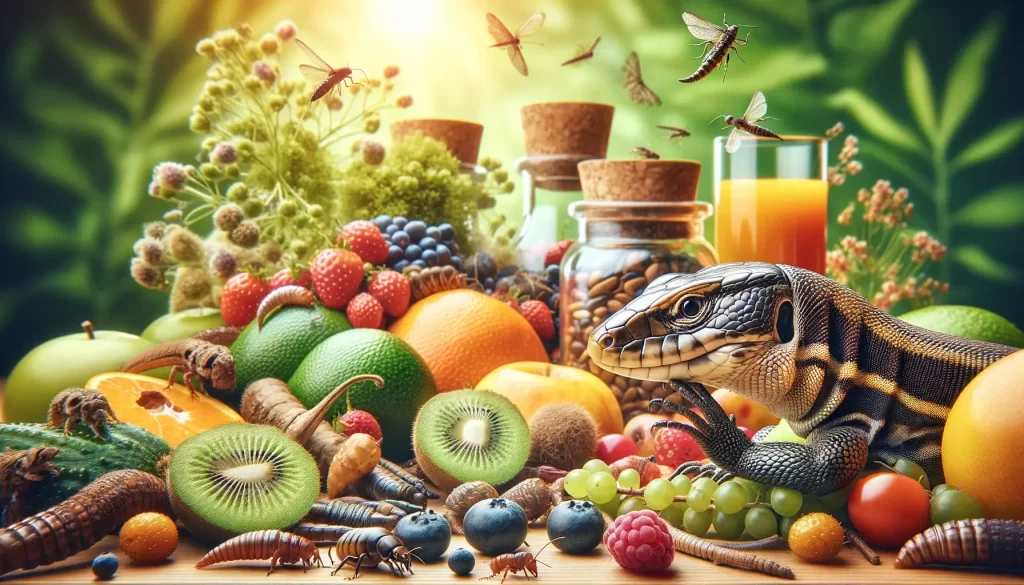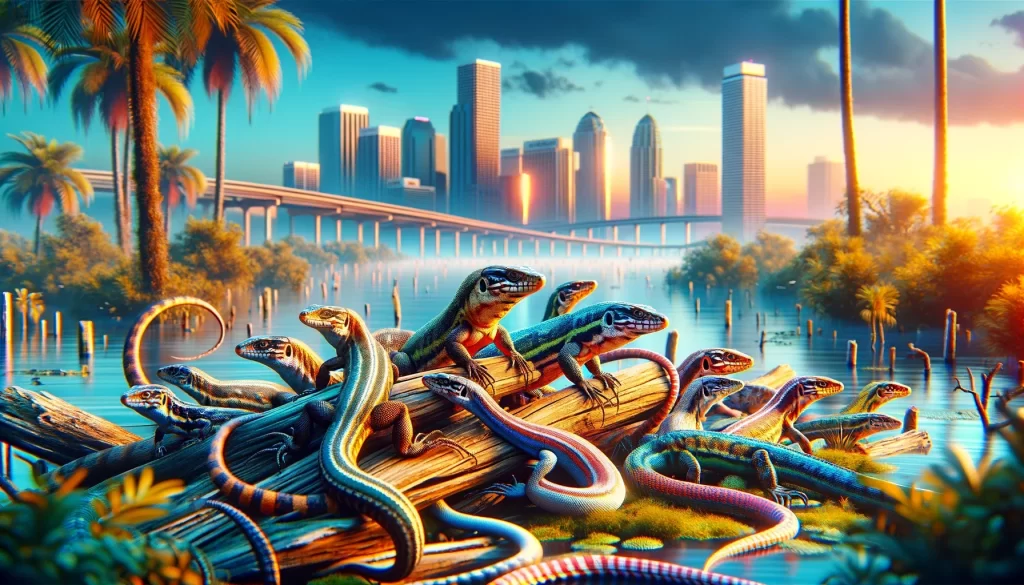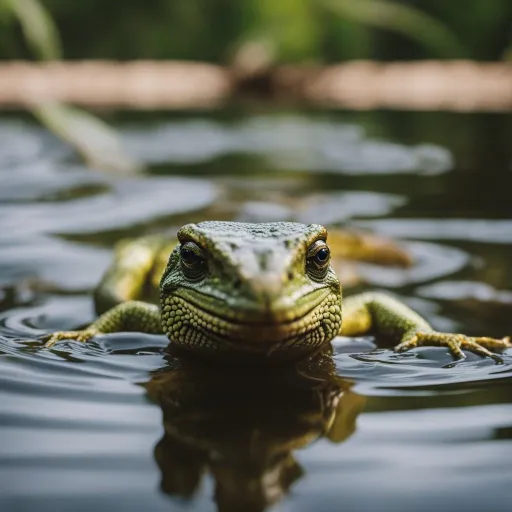
Have you ever wondered about the eating habits of lizards? In the animal kingdom, there are many different types of diets, and lizards are no exception.
They are fascinating creatures, known for their incredible adaptability and wide range of habitats. But when it comes to their diet, are lizards primarily herbivores, carnivores, or perhaps even omnivores?
In this article, we will explore the eating habits of lizards and unravel the mystery of whether they are truly omnivores.
Get ready to uncover the surprising facts about these scaly creatures and their dietary preferences.
Introduction
Have you ever wondered about the dietary habits of lizards? Are they strictly carnivorous, or do they also have a taste for plants?
Well, you’re in luck because in this article, we will explore the fascinating world of lizards as omnivores.
Lizards are a diverse group of reptiles, and their dietary preferences can vary greatly depending on the species.
By understanding their classification, hunting abilities, feeding habits, and adaptations, we can gain insight into why lizards make such versatile omnivores.
Definition of Omnivores
Omnivorous Diet
Before delving into the specificities of lizards as omnivores, let’s first define what it means to be an omnivore.
An omnivore is an organism that consumes both plant matter and animal flesh as part of its diet. Unlike strict herbivores or carnivores, omnivores have a broad range of food sources available to them, which allows them to adapt to a variety of environments and seasons.
Examples of Omnivores
Some common examples of omnivores that you may be familiar with include humans, bears, raccoons, and rats.
These animals have evolved to incorporate both plant and animal matter into their diets, allowing them to take advantage of a wider range of food resources.
Classification of Lizards
Overview of Lizards
Lizards belong to the reptile class, which also includes snakes, turtles, and crocodiles. There are thousands of different species of lizards, ranging in size from tiny geckos to large monitor lizards.
They can be found in a variety of habitats worldwide, from deserts to rainforests. Lizards are well-known for their unique body structures, including scales, claws, and long tails, which aid in their locomotion and survival.
Common Characteristics
Regardless of their dietary preferences, lizards share several common characteristics. Most lizards have a relatively small skull with sharp teeth, which is advantageous for hunting and capturing prey.
Their bodies are typically covered in scales, which provide protection and help regulate body temperature.
Additionally, lizards have long tongues that they use for a variety of purposes, including capturing prey and gathering information about their surroundings.
Lizards as Carnivores
Hunting Abilities
In their natural habitat, many lizards display impressive hunting abilities that allow them to capture and consume small animals.
Some lizards, such as the chameleon, have specialized adaptations for stealthy hunting. With their ability to change color and blend seamlessly into their surroundings, chameleons can approach their prey undetected before striking with lightning speed.
Feeding Habits
Carnivorous lizards primarily feed on small invertebrates like insects, spiders, and worms. Their sharp teeth and powerful jaws enable them to quickly dispatch their prey.
Lizards often rely on their excellent vision and quick reflexes to detect and capture their prey. Once caught, they may consume their prey whole or tear it into smaller pieces.
Certain species, like the monitor lizard, have even been known to consume larger prey such as small mammals or birds.

Lizards as Herbivores
Plant Consumption
Despite their reputation as carnivorous reptiles, some lizards have also evolved to include plant matter in their diets.
Plant-eating lizards primarily consume leaves, fruits, flowers, and other vegetation. This dietary shift could be due to the abundance of plant resources or the need for additional nutrients, as plant matter can be a rich source of vitamins and minerals.
Adaptations for Herbivory
When it comes to consuming plants, lizards have developed specific adaptations to facilitate their herbivorous habits.
Some lizards, like iguanas, have specialized dental structures that allow them to efficiently chew and process tough plant material.
Additionally, certain herbivorous lizards possess fermentation chambers in their digestive systems, similar to those found in cows and other ruminants.
These chambers harbor beneficial bacteria that aid in the breakdown of plant cellulose and the extraction of nutrients.
Lizards as Insectivores
Insect Consumption
Insects form a significant portion of many lizard species’ diets. These insectivorous lizards have adapted to feeding on a wide range of invertebrates, including ants, beetles, crickets, and grasshoppers.
Insects provide a readily available source of protein and other essential nutrients, making them a valuable food resource for many lizard species.
Feeding Strategies
To capture their insect prey, lizards use a variety of feeding strategies. Some lizards, like geckos, have adhesive toe pads that allow them to climb surfaces and snatch unsuspecting insects from walls or tree trunks.
Other lizards employ ambush tactics, patiently waiting for prey to come within striking distance before launching a rapid attack.
These insectivorous lizards have well-developed visual and sensory systems to detect the movements and vibrations of their prey.
Examples of Lizards as Omnivores
Leopard Gecko
The leopard gecko (Eublepharis macularius) is a popular pet lizard known for its omnivorous diet.
Although primarily insectivorous, leopard geckos also consume some plant material, such as fruits and vegetables.
This dietary versatility allows them to access a wider range of nutrients and adapt to different environments.
Bearded Dragon
Bearded dragons (Pogona spp.) are another example of lizards that exhibit omnivorous behavior.
These unique reptiles consume a mix of insects, greens, and occasional small amounts of fruits.
Their diet includes crickets, mealworms, leafy greens like kale or collards, and even some berries. This flexibility in dietary choices allows bearded dragons to thrive in captivity and in the wild.
Blue-Tongued Skink
Blue-tongued skinks (Tiliqua spp.) are fascinating lizards with bright blue tongues and an omnivorous appetite.
They consume a variety of foods, including fruits, vegetables, flowers, insects, and even small vertebrates.
With such diverse feeding preferences, blue-tongued skinks have a greater chance of finding suitable food sources regardless of the available options in their environment.
Green Iguana
The green iguana (Iguana iguana) is a large lizard species native to Central and South America.
While primarily herbivorous, green iguanas occasionally consume insects and other small animals in the wild.
This opportunistic omnivory allows them to supplement their plant-based diet with additional protein and other nutrients when necessary.
Omnivorous Behavior in Lizards
Opportunistic Feeding
The omnivorous behavior exhibited by lizards can be seen as an opportunistic feeding strategy.
By being able to consume a wide array of food sources, lizards increase their chances of survival, especially in environments where resources may be scarce or unpredictable.
This adaptability allows them to capitalize on the availability of various food items, ensuring their nutritional needs are met.
Dietary Necessity
For some lizards, incorporating both plant and animal matter into their diet is not just a matter of choice, but a necessity.
Certain nutrients, such as calcium, may be more readily available from animal sources, while vitamins and fiber are more abundant in plants.
By including both types of food in their diet, lizards can ensure they have access to the required nutrients for growth, development, and overall health.
Nutritional Requirements
As with any omnivorous species, lizards have specific nutritional requirements that need to be met.
It is crucial for owners of pet lizards to provide a balanced diet that includes a mix of protein, carbohydrates, fats, vitamins, and minerals.
In captivity, this can be achieved through a carefully curated diet consisting of commercially available lizard food, supplemented with fresh fruits, vegetables, and live insects to mimic their natural diet.
Impact of Omnivory on Lizard Survival
Versatility in Food Sources
Being omnivorous provides lizards with a survival advantage by increasing their ability to find food in a range of environments.
In times of scarcity or seasonal fluctuations, omnivorous lizards can adjust their diet accordingly. This flexibility allows them to survive and reproduce even when their preferred food sources are limited or unavailable.
Enhanced Survival in Variable Environments
The ability of lizards to adapt their feeding habits based on the resources available in their environment enhances their chances of survival in unpredictable or changing conditions.
Lizards living in environments with fluctuating food availability, such as deserts or areas prone to drought, may have an advantage over strict herbivores or carnivores.
Their omnivorous nature enables them to switch between plant matter and animal prey, ensuring their energy needs are met regardless of the prevailing conditions.
Final Thoughts
In conclusion, lizards are fascinating creatures that exhibit a wide range of dietary behaviors. While some lizards are strict carnivores, primarily feeding on insects and small animals, others have evolved to include plant material in their diets.
As omnivores, lizards enjoy the advantage of adaptability, allowing them to survive and thrive in various environments.
By understanding the classification, hunting abilities, feeding habits, and adaptations of lizards, we can appreciate the versatility and resilience of these remarkable reptiles.



